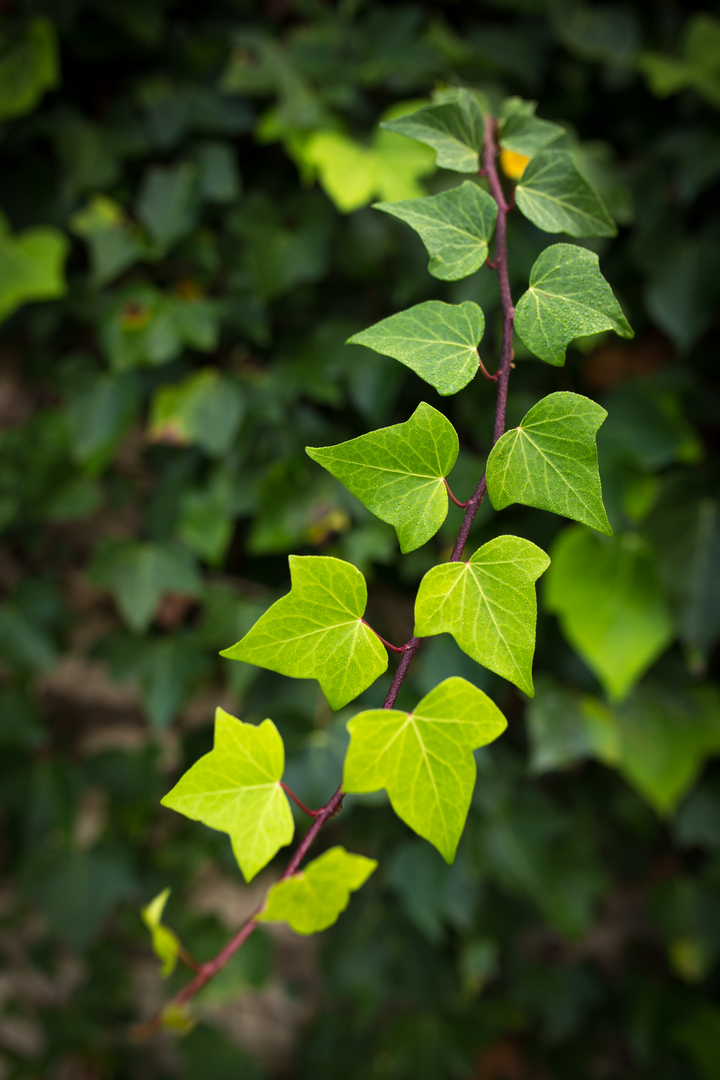Utilisation

Ivy is a very old cultivated and medicinal plant that was of great importance both in antiquity and in the Middle Ages. Ivy was used to treat diseases of the spleen, the respiratory tract, rheumatism and gout as well as jaundice and dysentery.
From today's perspective, only its use as an expectorant, i.e. as a cough-relieving medicine, is medically recognised. Clinical trials have confirmed an expectorant effect for some extracts, which is very probably due to the saponins(hederacosides) contained in the leaves. An antispasmodic effect has also been established. The name "saponins" (Latin sapo = soap) is due to a characteristic property of these substances: Due to their chemical structure, they form a foam in aqueous solution when shaken, which persists over a long period of time.
Pharmacological studies have shown that saponins have a variety of effects. In addition to their mucolytic and antispasmodic effects, antibacterial, antiviral and antifungal properties have also been identified. However, if the dosage is too high, the strongly irritating effect of the saponins on the mucous membranes comes to the fore as an undesirable effect. For medicinal use, it is therefore advisable to use authorised or registered herbal medicines, which are available in the form of cough syrups, drops, effervescent tablets or capsules. The use of ivy leaves as a tea drug is not advisable due to the poor dosage. The fruits (berries) also contain considerable amounts of saponins. Eating them can cause nausea, vomiting, colic and diarrhoea (especially in children) and should therefore be avoided at all costs. The ingredient falcarinol contained in the fresh leaves has allergenic potential and can trigger itchy rashes and inflammation on contact with the skin. It is therefore better to wear long-sleeved clothing and gloves when handling ivy in the garden.
Botany
Ivy belongs to theAraliaceae family. The evergreen climbing shrub can climb or creep up to 20 metres high. The leaves of ivy have a special feature, known as heterophylly. The young form of the leaves is triangular to pentagonal or lobed, while the mature form (flowering shoots) is rhombic to ovate. All leaves are leathery, dark green and glossy on the upper side. There is often a light-coloured leaf vein.
The ivy begins to flower in autumn at the age of seven. Its inconspicuous flowers are greenish-yellow in colour and are arranged in hemispherical umbels. The black, pea-sized fruits ripen over the winter.
The ivy got its name from its climbing roots: the Greek word hedra means "to sit" - a reference to the plant's clinging to walls and trees. The species name helix means "winding" and explains the plant's upward-twining characteristic.
Distribution
Ivy is widespread throughout Europe and is now found in many cultivated and garden forms.
Its favoured habitats are moist forests, especially shady deciduous forests. The common ivy is a major exception in the ivy family. This is because all other ivy plants only thrive in tropical forests.
Service
The preservation of diversity is very important to us, which is why we store around 5,400 samples of seeds and plants in our gene bank. With the gene bank for agricultural crops, medicinal and aromatic plants, we are making a significant contribution to the preservation of biodiversity.
Last updated: 20.12.2024
automatically translated